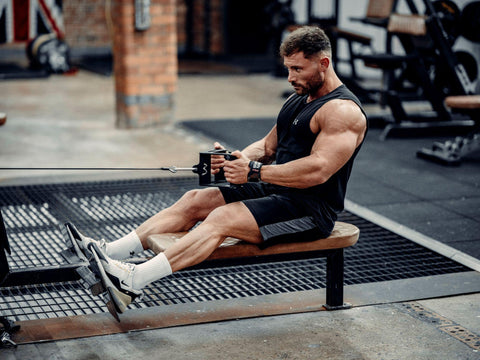March 14, 2024 4 min read

Hormones are chemical messengers that play a vital role in all kinds of bodily processes, from metabolism to reproduction.
It’s normal to experience some hormonal changes throughout life, but sustained hormone imbalances can cause a range of health problems, from insulin resistance to polycystic ovary syndrome (PCOS).
The good news is that different types of exercise, including strength training, can help keep hormone levels balanced.
For example, one study found that just eight weeks of exercise can improve the way your body uses insulin, an important hormone that helps your body manage blood sugar levels and turn food into energy.
Does exercise regulate hormones, and what hormones are released during exercise? Keep reading to learn more about strength training and hormones and find out how to make the most of your weightlifting workouts with a pair of quality weightlifting grips.

Strength training, also known as resistance training, is any kind of exercise that involves working your muscles against external weights or resistance. Lifting weights—whether with free weights or weight machines—is an example of strength training. So is using resistance bands.
Research shows that strength training and other forms of exercise can positively affect hormone balance. Here are some examples:
Experts report a connection between weightlifting and female hormones. By increasing lean muscle mass (which boosts metabolism), strength training helps keep women’s estrogen levels in check.
High levels of estrogen have been linked to problems like obesity, type 2 diabetes, and cancer, so regulating this hormone is essential. For menstruating women, strength training in the follicular phase of the menstrual cycle has been linked to better strength gains.
Both men and women experience short-term increases in testosterone levels following intense physical activity, such as weightlifting or high-intensity interval training (HIIT).
Weightlifting exercises like bench presses, deadlifts, and squats have the biggest impact on testosterone levels. A boost in testosterone can improve muscle mass, bone density, and even libido, and research shows that high-intensity strength training is especially helpful for men.
Both aerobic exercise and resistance training are associated with improvements in insulin sensitivity. And in the case of insulin, sensitivity is a good thing.
By making your body more sensitive to insulin, weight training and other physical activity can lower your blood glucose levels up to 24 hours or more after your workout, according to the American Diabetes Association. It’s why regular exercise (along with a healthy diet) can help stave off diabetes and prediabetes.

Strength training stimulates the release of dopamine, a neurotransmitter that causes the “feel-good” sensation many people experience after vigorous exercise, also known as “runner’s high.” And these effects aren’t temporary. Regular resistance training helps regulate dopamine levels in the brain, which can lead to better overall mental health.
Serotonin
Strength training also increases the production and release of serotonin, another neurotransmitter that plays a key role in mood regulation, appetite control, and sleep. Higher levels of serotonin can reduce stress and anxiety, help stave off depression, and lead to better overall mental health and well-being.
Strength training is a great way to build lean muscle and stay fit. Here are a few tips to get started.
If you’re new to weightlifting, start with a simple routine that targets major muscle groups. Don’t overexert yourself. A typical beginner’s routine might include exercises like squats, planks, and bicep curls. Try resistance bands or light free weights (dumbbells or kettlebells) to start. These versatile tools allow you to adjust the amount of resistance, as needed.
Weightlifting grips are designed to help you get a better grip on barbells, dumbbells, and kettlebells. They also help reduce grip fatigue, which can lead to injuries. By taking your mind off your grip, you can focus completely on executing each movement with good form. This is called “mind-muscle connection,” and it’s the key to getting the most out of your lifting sessions. Invest in a pair of quality weightlifting grips, like Versa Gripps, to see the biggest gains.
Consistency is everything when starting a new strength training routine. Plan to do strength training workouts 2-3 times per week. Give your muscles time to recover by mixing up your workouts and resting between sessions. Don’t ignore your body’s signals or push through pain.

Versa Gripps are unlike any other weightlifting grip on the market. Designed for quick-move transitions, these innovative grips are like hooks, straps, and grips all in one. Switch between pushing and pulling moves with a simple twist of the grip—no stopping to change gear. It’s why Versa Gripps are preferred by professional weightlifters, including Olympians.
With proprietary, custom-engineered non-slip material and built-in arch support, Versa Gripps help you train safely. They’re the only weightlifting accessory you’ll ever need. Find your perfect pair of Versa Gripps and train better.
Copyright Versa Gripps 2023